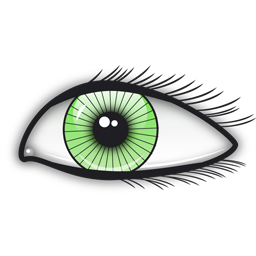Five
When I was sixteen I broke my right arm playing football. I was flipped in midair as I leaped to spoil a certain mark.
 Complications meant I needed plates inserted. Then there was significant nerve damage – I couldn’t feel the lower half of my right hand, the ring finger, and small finger. I had to wear a brace around my hand that forced my fingers to flex when the rest of the hand flexed. Once I started feeling again, the brace bit excruciatingly into my right hand, particularly my palm. Well, that’s the way it felt thanks to the damage. I started wearing a fingerless glove – the genesis of wearing gloves. It was eleven months before my hand recovered, but it never healed fully.
Complications meant I needed plates inserted. Then there was significant nerve damage – I couldn’t feel the lower half of my right hand, the ring finger, and small finger. I had to wear a brace around my hand that forced my fingers to flex when the rest of the hand flexed. Once I started feeling again, the brace bit excruciatingly into my right hand, particularly my palm. Well, that’s the way it felt thanks to the damage. I started wearing a fingerless glove – the genesis of wearing gloves. It was eleven months before my hand recovered, but it never healed fully.
It’s only when you face significant injury (or illness) that you learn how malleable the body is. Until then, you’re invulnerable – especially when you’re young. Recovery seems certain. We don’t understand our fragility because we have the fallible belief that we’ll always bounce back. We don’t confront our mortality until we’re forced to.
Since that broken arm, I’ve had (among other things) disc problems in my neck and lower back, digestive issues, and – the worst of them – a broken leg, courtesy of a car running me down at a crossing. That left me with breaks to both bones, a dislocated ankle, nerve damage (the bones hooked the nerve and wishboned), and then led to complications with something called Complex Regional Pain Syndrome – the area surrounding the injury misreports what’s going on.
I can step on a vacuum cleaner cord and it feels like I’ve stepped on the blade of a knife. Sometimes, I’ll feel as if my toes have folded under my foot, or that my foot is pointing in a direction it’s not, or like there’s a wobbly hinge in the middle of my shin (about eight inches above where the break occurred, but where I imagine the whole leg would’ve flexed under the weight of the car) when I walk.
Other times, it’ll feel like somebody has jabbed my sole with a needle, or as if areas of my foot (particularly my big toe, which is seemingly the epicenter of all my issues) are burning – sometimes so badly I have to remove any pressure from area, even if the pressure is as little as wearing a sock.
The nerve damage never fully recovered, which means the top half of my foot is semi-numb, and the foot itself has clawed. That’s what aggravates me most. If you scrunch up your foot and hold it there, that’s how my foot’s felt for last twelve years. It bothers me that I can’t straighten it – that I can never release it. It upsets my OCD.
I hide most of this as best as I can, even though my foot hurts every time I put it down, and sometimes – usually after I’ve been walking or standing (standing’s worse, probably because it means my foot is constantly weight bearing) – it grows so tender and raw that I can hear it begging me to get off it.
When I’m barefoot, I still limp because of the clawing of my foot. It doesn’t have the shape or flexion to accommodate a normal walking gait. Runners have insulation (and mine contain orthotics built to protect my right foot) and a curvature that helps compensate – at least until I get really sore.
Maybe it’s because of a lifetime of dealing with mental health issues, and trying to project that everything’s okay, that I’m good at disguising what’s going on with my body. I’ll smile, interact, joke around, and make out like nothing unusual is going on, but sometimes the pain is almost overwhelming.
Other times, I can’t hide it, or at least hide it quite so well.
Chronic pain wears you down. There’s an arc that injuries and illnesses are meant to follow – the instigation, the progression to the worst of it, the epoch, and then the journey to recovery. You know when that’s happening. You don’t just feel it physically, but mentally, too. You know you’re healing.
With chronic pain, you never see that epoch.
If you look at pain as the course to death, and healing as life, some part of you is always on the wrong side of that equation.